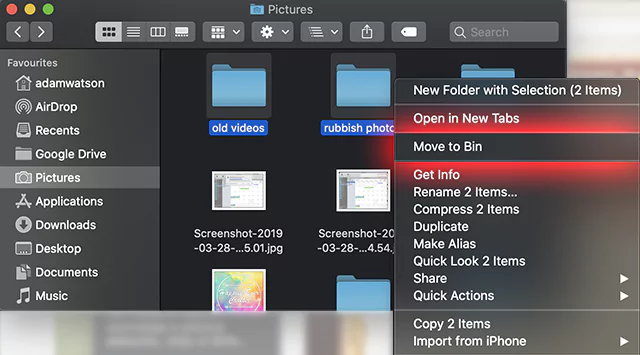Storage space is cheap these days. Unless you’re a Mac user. Sooner or later you’ll get a notification saying that “Your disk space is critically low”. When that happens your first instinct should be to go throught the installed apps and delete all the apps that you didn’t use in, let’s say, at least 2-3 weeks. App detox is always a good idea, phone included, even if you’re not low on space. Next take a look at your downloads folder. Usually there’s a bunch of stuff over there that you don’t need anymore. Like .dmg files.
Free up storage space on your Mac. When disk space gets tight, don’t start deleting your precious files. Avast Cleanup Premium for Mac scans your hard disk for hidden junk files, finds duplicates you never knew about, and keeps your Mac running smooth. App uninstaller Disk cleaner Photo cleaner Duplicate finder Cleaning alerts. Solved%3a date format issue excel. To install Clean-Me, open your terminal and install it via Homebrew with brew install -cask clean-me. Now all you have to do is open Clean-Me, click Analyze, turn On what you want to delete and click Clean. It’s that simple. The app will have a light theme or dark theme based on your macOS settings. You can also click on the folder icon next.
But you can also get quite a bit of space back if you delete cache and logs files, as well as email and iMessages attachments. Especially if run on the same Mac for a few years now and you’ve never wiped it clean to start fresh.
You can easily delete those files manually, if you know where to look ( usually in ~/Library/ ), but sometimes it’s nice to have an app that automates this process. One of those apps is Clean-Me. Free and open source.
Before we get started you should know that cache and log files are created on your computer for a reson. Cache files allow a program to start faster and run certain tasks faster. If you delete them, next time you’ll open that program it needs to recreate the cache file. It’s safe to delete them. Just don’t freak out if next time you open a program, it will start a bit slower than usual.
Also if your log files are huge, that usually indicates that a program or even your system spits out errors and maybe you should investigate before deleting.
To install Clean-Me, open your terminal and install it via Homebrew with brew install --cask clean-me
Now all you have to do is open Clean-Me, click Analyze, turn On what you want to delete and click Clean. It’s that simple. The app will have a light theme or dark theme based on your macOS settings.
You can also click on the folder icon next to each option to go to the exact path and see what files are going to be deleted and if you’re unsure of what any of the options will delete just hover your mouse cursor over the On/Off slider and you’ll get a pop-up with the option’s description.
Clean up your dev environment you filthy animal!
Ilove cleaning software? PLZ! Remove duplicates, find old OS cruft etc. But it never cleans a development machine as I can.
Sure, for general maintenance, nothing beats CleanMyMac. But once a year, developers should run through a few manual commands, because auto-cleaners won’t know how to take care of a developer machine.
Before we start, let’s look at how much “Free Space” you’re starting with:
Mine is reporting 132.2 GB before cleaning. Time to get started!
Mac Homebrew Users
This one usually shaves off hundreds of megs of data. Update, upgrade, and then clean up those files you’re not going to use.
Update then remove old formulae and their folders:
You might have used brew prune in the past, but that has been deprecated. Cleanup handles this for you!
General Brew Maintenance
Brew is a complicated system, and no one knows it better than the maintainers. So you can run brew doctor and get some additional chores you could take care of to have it run properly.
Git Users
Git is great, but it’s not hard to leave a bunch of merged branches laying around on your local machine! Those branches aren’t useful anymore, and sometimes make naming conflicts for future branches.
You can remove all the merged branches from a single project with this command:
WOW, what a mouthful for only one project! Let’s make it worse. ?
This code will CD into all folders in the current working directory, and then run the command to clean merged branches for each!
JavaScript Developers
Delete OLD `node_modules` embedded in projects
The following command finds all node_modules folders older than 120 days and removes them. This does mean you will have to npm i or yarn again in those older projects. This is usually a huge cleanup!
Removes all node_modules folders older than 4 months:
If you’re feeling quite aggressive, you can just clear out ALL node_modules folders and re-install as needed, by removing the mtime flag.
Removes all node_modules folders:
Remove old versions of Node
Remove old versions of Node. This varies depending on your Node manager. I use ’n’ so it’s easy for me. Consult uninstall for your specific version manager.
Using n?List all versions of node + your installed ones withn lsand then remove any withn rm <version>.
Using nvm?List your installed versions withnvm lsand then remove any withnvm uninstall <version>.
Using asdf?List your installed versions withasdf list nodejsand then remove any withasdf uninstall nodejs <version>.
Clean Free Space On Imac
Ruby Developers
Clean up old versions of Gems with the cleanup command. If you’re worried, you can see the results first with “dryrun”.
Then when you are confident, you can remove the “dryrun” param and run it for real.
Remove old versions of Ruby
This depends specifically on your Ruby version manager. We’ll do two popular versions to help you out.
Using rbenv?List your installed versions withrbenv versionsand then remove any withrbenv uninstall <version>.
Using rvm?List your installed versions withrvm listand then remove any withrvm uninstall <version>.
Xcode Developers
Xcode loves to cache things all over your machine, and some of these are hundreds of megs. Time to clean them up, and if you need to rebuild them again, no worries!
Erase Free Space Mac Meaning
Clean up CocoaPod caches:
Delete old Xcode Simulators:
Clean up various archives, logs, and derived data folders:
Check out your connected device info in ~/Library/Developer/Xcode/iOS Device Logs/ and delete anything for old iOS devices you’ve connected.
Docker
You can remove all volumes not used by at least one container. Because… why would you want those?!
This might be huge or it might remove nothing. Worth a run right!?
Remove unused local volumes
RESULTS?!
Erase Free Space Mac Terminal
Don’t forget to empty your trash and check on how we did!

30 GIGS! pulled off my machine! How about you?
Erase Free Space Mac High Sierra
Your success is probably vastly different, but I’d love to know. Comment or tweet at me your results, and any other developer spots you recommend we clean! I’ll be happy to add your advice to the article.

Gant Laborde is Chief Technology Strategist at Infinite Red, published author, adjunct professor, worldwide public speaker, and a mad scientist in training. Clap/follow/tweet or visit him at a conference.
Clean Free Space On Hard Drive
5 Things that Suck about Remote Work
The Pitfalls of Remote Work + Proposed Solutionsshift.infinite.redReact Native vs. Native
Should I learn React Native or Native?shift.infinite.red